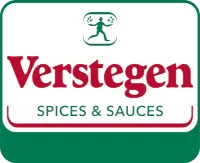The transition from order-driven to forecast-driven planning allows the food company to be more responsive to demand, make smarter purchasing decisions and ensure better use of the available production capacity. Manfred Lukkezen, COO at Verstegen and Arjan Levisson, Food Director at Slimstock, explain how they tackled this.
Verstegen is best known for its spice mixes sold in all major supermarkets, but that is only part of the market it serves. The family business, which has been around for 137 years, is also a supplier to other food companies, such as meat processors and food service companies. About sixty per cent of the herbs, marinades and sauces it manufactures are produced to customer specifications. The other forty per cent of Verstegen’s range includes the well-known jars, cans and bags, which are distributed to retailers.
The production facility in Rotterdam consists of fifty filling lines where over 4,000 different end products are made. Managing the daily production plan for the fifty filling lines is a complicated puzzle, explains Chief Operations Officer (COO) Manfred Lukkezen: “We focus on supplying relatively small batches rather than high-volume products. However, we don’t want to change products too much during the day because converting a production line eats into the profit margin. As a company, we rely primarily on our innovation and flexibility. The range is continuously updated. At least fifteen per cent of our products were introduced within the last year.”
Urgent issues and overtime
Until recently, Verstegen used its ERP system in combination with Excel for production and inventory planning. Orders were previously calculated manually based on past sales figures. However, according to Lukkezen, this is no longer desirable: “The market is becoming increasingly more demanding and you have to deliver perfectly. There were many urgent orders because we did not always have the right stock. Since we have our own transport fleet, we could always resolve these issues by making additional deliveries, but it was inefficient, and our drivers regularly had to work overtime.”
Verstegen realised it was time to roll out a more sophisticated planning system. As a result, the food manufacturer decided to adopt Slimstock’s Slim4 Platform. “We were looking for a solution with a proven track record,” says the COO.
“Many of our fellow food companies and customers already work with the Slim4 platform. As a result, Slimstock’s supply chain experts have a solid understanding of our industry. They know what our customers find important and could set up the system accordingly. That was essential for us.”
Between two fires
The new technology will be introduced in phases, initially to forecast demand and optimise the inventory for the retail market – this part is now live – and later to manage the entire supply chain.
Integrating ‘demand’ and ‘supply’ is crucial, says Arjan Levisson of Slimstock. As a food company, you are caught between two fires: on the one hand, you have the customer, who is increasingly more demanding, and on the other hand, you have to deal with the volatility of the supply chain. You must have a responsive supply chain to navigate this smoothly as a food company without too much waste or overstock. You need a system that quickly picks up signals from the market and translates them into robust raw material and packaging requirements and optimised production orders.”
Change in thinking
The implementation is well underway, and Lukkezen already sees improved responsiveness throughout Verstegen’s operation. “There has been a change in our thinking,” he notes. “When it comes to supply chain planning, we used to look backwards, analysing sales history and honing in on the orders which make up sixty per cent of our revenue. But now we are learning step by step to look forward. Slimstock’s Slim4 platform creates a robust forecast and automatically translates it into the optimal inventory plan. Slim4 has reduced the workload for our planning team and brought peace to the logistics operation. Drivers now work much less overtime. The service level has also increased.”
Optimising raw materials and packaging
The positive results have also created new opportunities throughout the order-driven part of the assortment. Large industrial customers are placing orders with ever-shorter notice, making reserving capacity and ordering ingredients on time more difficult.
Lukkezen explains: “The product life cycles are also becoming shorter, making it more difficult to purchase raw materials based on customer orders. These are often used for different end products, so you never know whether the right item is available.”
“Just like for end products, you also need a good forecast to effectively manage the inventory plan for raw materials and packaging. This inventory plan must also be able to respond dynamically to changes in the demand for end products. You can’t do that with an ERP or with Excel.”
Forecast-driven
The goal is also to optimise planning for the industrial part of the product range; Lukkezen continues: “We are gaining more and more confidence in the forecasts to the point where we can confidently start production before a customer order is finalised.”
This switch to forecast-driven production prevents rush orders and ensures that production capacity is better utilised. According to Levisson, this is also completely in line with Verstegen’s vision for its S&OP process: “The sales department makes a demand plan based on the forecast, supplemented with the market insight they receive from customers. This means you can anticipate and identify potential bottlenecks or shortages sooner to avoid surprises.
By implementing Slim4, Verstegen has taken an essential step in the right direction. “We have become proactive. If we also start planning the order-driven part in Slim4, we can translate this into more effective purchasing to make better annual agreements with suppliers. Now that we have an advanced supply chain tool, there is also room for employees to take on other tasks, such as implementing process improvements. Previously, everyone was busy with Excel, and we often only started producing when an order came in. When I think about this now, it is a miracle that this has gone well for all these 137 years.”






